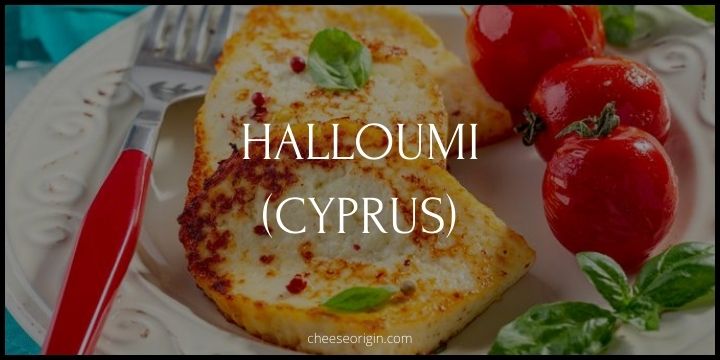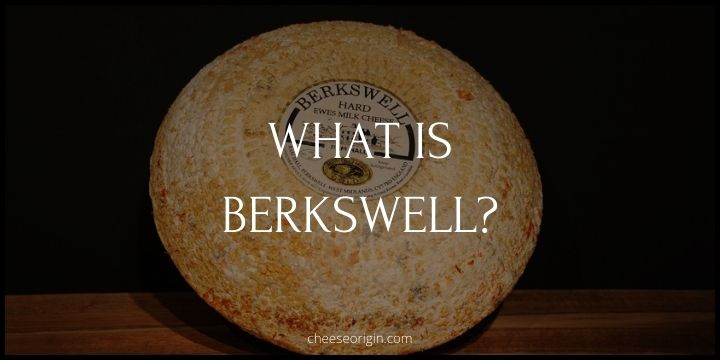What is Paneer Cheese? A Guide to India’s Favorite Cheese
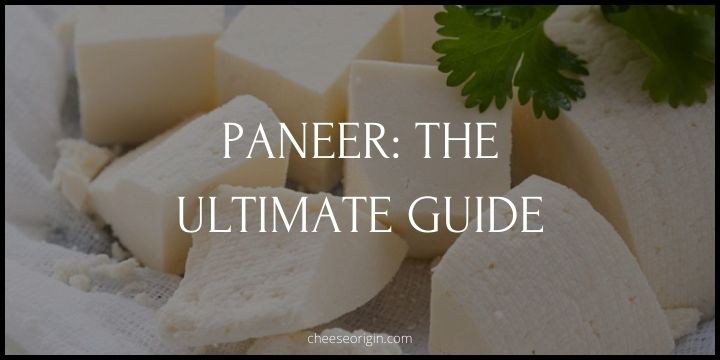
If you’ve ever savored a bite of an aromatic paneer curry or relished a slice of crispy paneer tikka and wondered about the magic behind this versatile cheese, then you’re in the right place.
In this guide, we will embark on a flavorful journey – from the humble origins of paneer, understanding its making process, and venturing into the world of sumptuous recipes that can be mastered at home.
Whether you’re a seasoned paneer lover or a curious foodie looking to explore new culinary horizons, this guide is sure to take your appreciation for paneer to a whole new level.
So, get ready to dive deep into the world of paneer, a cheese that has won hearts across continents with its simplicity and taste!
Quick facts about Paneer
| Quick Facts | Details |
|---|---|
| Origin | India |
| Category | Cheese |
| Texture | Firm, crumbly |
| Taste | Mild, milky |
| Color | White |
| Primary Ingredient | Milk (usually cow or buffalo) |
| Process | Heat milk, add food acid (lemon juice, vinegar, etc.), strain curds, press into a firm block |
| Cooking Uses | Grilled, fried, simmered in curries, served cold in salads |
| Popular Dishes | Palak Paneer, Matar Paneer, Paneer Tikka, Paneer Butter Masala |
| Nutrition | High in protein, contains calcium and vitamin D |
| Storage | Refrigerate, use within a week |
| Vegetarian? | Yes, but check the source of food acid if this is a concern (some forms of rennet are animal-derived). |
| Lactose Content | Low, as most lactose is removed during the cheese-making process. |
| Availability | Widely available in Indian grocery stores, some mainstream supermarkets, online retailers, or can be homemade. |
What is Paneer cheese?

Paneer is a type of fresh cheese common in Indian cuisine. It’s an unaged, non-melting cheese made by curdling heated milk with lemon juice, vinegar, or other food acids. The resulting curds are then drained in a cheesecloth and pressed under weight until firm.
Unlike many cheeses, paneer is not made with rennet (an enzyme used to coagulate milk), making it completely vegetarian. The cheese has a mild, milky flavor with a dense crumbly texture that holds its shape when cooked, making it ideal for stir-fries, curries, and grills.
Nutritionally, paneer is rich in protein and calcium, while being low in fat compared to other cheeses, which makes it a popular choice for vegetarians and health-conscious individuals.
What does Paneer taste like?
Paneer has a mild, slightly sweet, and milky flavor. It doesn’t have a strong distinctive taste of its own, which makes it a versatile ingredient that can easily absorb and complement the flavors of the dish it’s added to.
The texture of paneer is firm and crumbly, yet it’s soft to bite into, similar to firm tofu or halloumi cheese. It does not melt when heated, retaining its shape even in hot dishes. Because of its subtle taste, paneer works well with strong, spicy flavors often found in Indian cuisine.
Paneer cheese tasting notes
- Appearance: Paneer is typically white in color, often with a slightly yellowish hue. It usually comes in a rectangular or square block, though it can be cut into various shapes.
- Texture: Paneer has a dense and crumbly texture. It’s firm to the touch but soft when bitten into. Unlike many cheeses, it does not melt when heated, which allows it to maintain its shape in various dishes.
- Aroma: Paneer has a very mild aroma, similar to fresh milk. It does not have the strong aromatic profile that many aged cheeses possess.
- Taste: The taste of paneer is mild and milky, with a slight sweetness. It is not salty like many types of cheese.
- Aftertaste: Paneer leaves a light, clean aftertaste. There’s no lingering strong flavor, making it a good palette cleanser.
- Pairings: Due to its mild flavor, paneer pairs well with strong, spicy, and tangy flavors. It’s commonly used in Indian cuisine, where it absorbs the flavors of the spices used in the dishes. It also complements sweet, fruity flavors well.
- Mouthfeel: Paneer is smooth and slightly grainy on the tongue. It has a pleasing mouthfeel that isn’t too heavy or rich.
- Versatility: Paneer’s mild flavor and non-melting characteristic make it extremely versatile. It can be used in a variety of dishes including curries, stir-fries, kebabs, and desserts.
How to make tasty Paneer cheese at home: A step-by-step guide
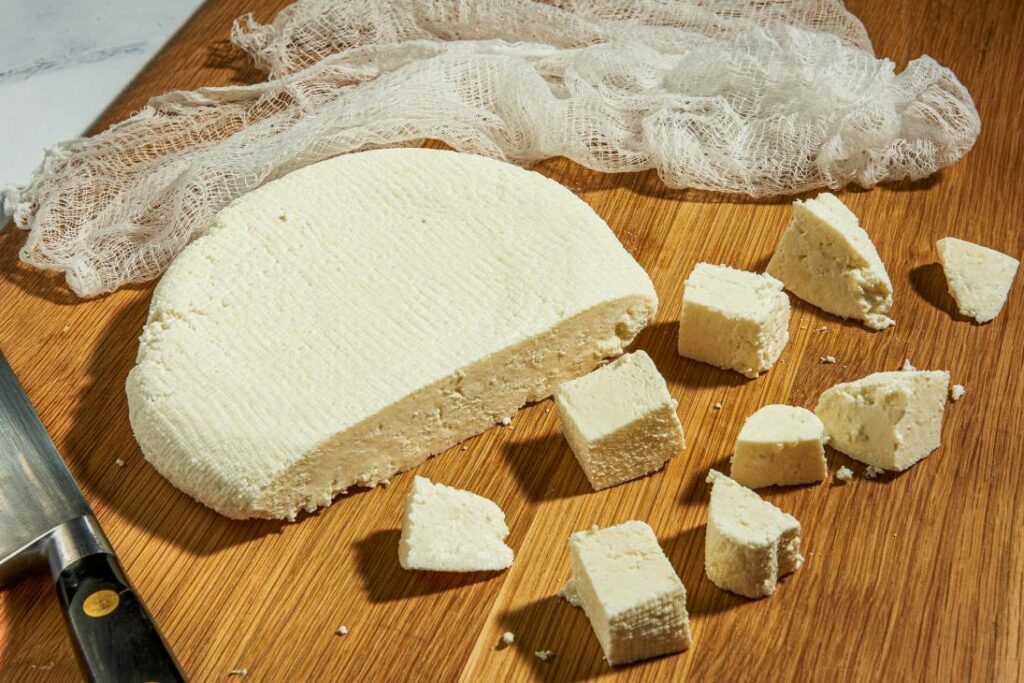
Ingredients:
- 1 liter of full-fat milk
- 2-3 tablespoons of lemon juice or white vinegar
Tools:
- A heavy-bottomed pan
- A stirring spoon
- A strainer
- Cheesecloth or muslin cloth
- A heavy object to press the cheese
Step-by-step Instructions:
- Boil the Milk: Pour the milk into the pan and place it over medium heat. Allow it to come to a boil, stirring occasionally to prevent the milk from sticking to the bottom of the pan.
- Add the Acid: Once the milk starts boiling, reduce the heat to low. Slowly add the lemon juice or vinegar while stirring gently. You’ll see the milk start to curdle and separate into curds and whey. If the milk doesn’t curdle completely, you may need to add a little more acid.
- Strain the Curdled Milk: Place the cheesecloth over the strainer and pour the curdled milk through it. This will separate the curds from the whey. Make sure to keep a bowl under the strainer to collect the whey, which can be used in other recipes.
- Rinse and Drain: Rinse the curds under cold water to remove the tangy flavor of the lemon juice or vinegar. Then, gather the edges of the cheesecloth and squeeze out as much water as you can.
- Press the Cheese: Place the cheesecloth with the curds on a flat surface, put a heavy object on top, and leave it for about 1-2 hours. This will press out more water and help the paneer hold its shape.
- Cut into Cubes: After pressing, your paneer should be firm and ready. Unwrap it from the cheesecloth and cut it into cubes or slices.
Storage: Store the paneer in an airtight container filled with water in the refrigerator. This will keep it fresh for up to a week. For longer storage, you can also freeze it.
Tips and Tricks:
- To infuse unique flavors into your paneer, consider adding herbs or spices to the milk while it’s boiling. You could try cardamom, thyme, rosemary, or even a bit of garlic.
- You can also experiment with using different types of acid to curdle the milk. Each one (lemon juice, vinegar, yogurt) will give the paneer a slightly different flavor and texture.
- For a creamier paneer, you can add a small amount of cream to the milk before boiling it.
Remember, making paneer is an art, and like any art, it takes practice. Don’t be discouraged if your first few tries don’t turn out perfect. With time and experience, you’ll be able to make delicious, high-quality paneer right at home!
How is Paneer different from regular cheese?
Paneer is quite different from many other types of cheese, particularly those commonly found in Western cuisine. Here are a few key differences:
- Preparation Method: Paneer is an acid-set cheese, meaning it’s made by adding food acid (like lemon juice or vinegar) to hot milk to separate the curds and whey. Many other cheeses, like cheddar or mozzarella, are rennet-set cheeses, made by adding rennet to milk.
- Aging: Unlike many other cheeses that are aged for weeks, months, or even years, paneer is a fresh cheese that is consumed soon after it’s made. This results in a very different flavor profile – paneer has a mild, milky flavor, whereas aged cheeses can develop strong, complex flavors.
- Melting Point: Paneer has a high melting point, so it can be heated without losing its shape. This makes it suitable for grilling or frying, unlike many other cheeses that would melt and lose their form when exposed to high heat.
- Texture: Paneer has a firm, almost rubbery texture, very different from the creamy or crumbly textures of many other cheeses. It’s solid enough to be cut into cubes but soft enough to chew easily.
- Culture: Paneer is a staple in South Asian cuisine, particularly in India, while most other cheeses have their origins in Europe and are more commonly used in Western cuisine. This also influences the types of dishes in which the cheeses are used.
Are Paneer and Mozzarella the same?
Paneer and Mozzarella are both popular types of cheese, but they have distinct differences in terms of origin, preparation process, texture, flavor, and usage in cooking.
| Paneer | Mozzarella | |
|---|---|---|
| Origin | Originated in the Indian subcontinent. | Originated in Southern Italy. |
| Preparation Process | Made by curdling milk with a food acid like lemon juice or vinegar. The curds are then drained and pressed into a block. | Made by curdling milk with rennet. The curds are then heated, stretched, and kneaded to achieve a stringy, elastic texture. |
| Texture | Firm and crumbly. Does not melt when heated. | Soft and elastic. Melts well when heated. |
| Flavor | Mild, milky flavor. | Mild, slightly tangy flavor. |
| Use in Dishes | Commonly used in Indian dishes such as curries, stir-fries, and grilled dishes. | Widely used in Italian dishes such as pizza, lasagna, and salads. |
>> Click here to read our in-depth guide on Mozzarella
Is Paneer a healthy cheese?
Yes, Paneer is a healthy cheese due to its nutritional profile:
- High in Protein: Paneer is a good source of protein, which is essential for building and repairing tissues in the body. According to Sach Foods, one ounce of Paneer cheese contains 7 grams of protein
- Low in Fat: Compared to many other types of cheese, Paneer is relatively low in fat. This makes it a preferred choice for those seeking a lower-fat option.
- Rich in Calcium: Both Paneer and Mozzarella are good sources of calcium, which is important for bone health.
- Contains Essential Fatty Acids: Paneer is a rich source of Omega 3 and Omega 6 fatty acids, which are beneficial for preventing rheumatoid arthritis.
- Calorie Content: A 250-gram serving of low-fat paneer offers 180 calories, making it a suitable choice for those watching their calorie intake.
Note: the healthiness of paneer can depend on the specific product and how it’s prepared. For example, fried paneer will have a higher calorie and fat content than raw or grilled paneer.
Paneer nutrition facts
| Nutrient | Amount (Per 100 grams) |
|---|---|
| Calories | 318 Kcal |
| Fat | 24.7 grams |
| Carbohydrate | 3.5 grams |
| Protein | 21.2 grams |
7 best Paneer cheese substitutes
| Substitute | Explanation |
|---|---|
| Cottage Cheese | Cottage cheese has a similar texture to paneer and also has low-fat content. It can be crumbled and used in the same way as paneer in many recipes. |
| Queso Panela | This is a Mexican cheese that has a similar texture to paneer. It holds its shape well when heated, making it a good substitute for paneer in dishes like curries or stir-fries. |
| Queso Blanco | Queso Blanco is another Mexican cheese that doesn’t melt easily, making it a good alternative for paneer in heated dishes. |
| Firm or Extra-Firm Tofu | Tofu is a vegan option that can mimic the texture of paneer. It’s also high in protein. However, it has a different flavor profile and may not work in all recipes. |
| Halloumi | Halloumi is a cheese made from goat’s and sheep’s milk. It has a strong flavor but holds its shape well when cooked, similar to paneer. |
| Feta Cheese | Feta cheese has a crumbly texture similar to paneer, but it has a more tangy flavor. It can be used as a substitute in salads or dishes where the tanginess complements the other ingredients. |
| Ricotta Cheese | Ricotta cheese has a similar texture to paneer when drained well. It is mild in flavor, so it can take on the flavors of the other ingredients in a dish. |
How to eat Paneer cheese?

- In Curries: Paneer is often used in Indian cuisine, particularly in curries such as paneer tikka masala, palak paneer (spinach and paneer), or matar paneer (peas and paneer).
- Grilled: Paneer holds up well to grilling. You can marinate it in spices and then grill it for a tasty and protein-packed dish.
- Stir-fried: You can stir-fry paneer with vegetables and spices of your choice for a quick and nutritious meal.
- In Salads: Paneer can be crumbled and added to salads. It pairs well with a variety of vegetables and dressings.
- Stuffed in Flatbreads: In Indian cuisine, paneer is often used as a stuffing in flatbreads like paratha.
- As a Snack: You can pan-fry cubes of paneer until they’re golden and crispy, then sprinkle them with spices for a delicious snack.
- In Desserts: Paneer is also used in some Indian desserts, like rasgulla and rasmalai.
What pairs well with Paneer?

Food that goes well with Paneer
| Category | Food |
|---|---|
| Curries | Paneer Tikka Masala, Palak Paneer (Spinach and Paneer), Matar Paneer (Peas and Paneer) |
| Rice Dishes | Paneer Biryani, Paneer Pulao |
| Breads | Naan, Paratha, Roti, Stuffed Paneer Bread Roll |
| Side Dishes | Pickles and Chutneys (Mango, Tomato, Mint), Raita, Salad |
| Snacks & Appetizers | Paneer Tikka (Grilled Paneer), Paneer Bhurji (Scrambled Paneer) |
| Desserts | Rasgulla, Rasmalai |
Also read: 11 Best Crackers that Pair Well with Cheese
Beverage that goes well with Paneer
| Category | Beverage |
|---|---|
| Beer | Kingfisher, Lagers, Pilsner, Munich |
| Wine | Tempranillo, Zinfandel, White Wine, Mulled Wine, Red Wine, Riesling Spätlese, Pinot Gris, Gewürztraminer, Pinot Noir, Gamay |
| Cocktails | Cocktails made with aromatic spices like cinnamon, cloves, and orange zest |
| Non-Alcoholic | Paneer Soda |
Also read: Best Wine and Cheese Pairings: The Ultimate Guide
The History and Origin of Paneer: India’s Beloved Cheese
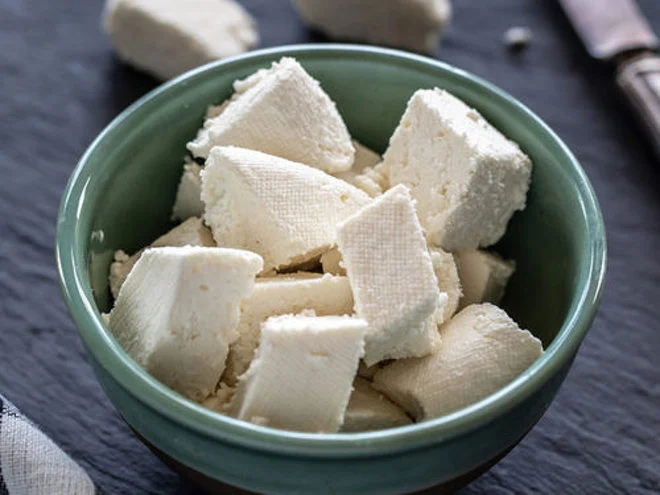
Paneer, a staple in the Indian diet, has a rich and fascinating history. Its origins are disputed but commonly traced back to the Persian and Afghan rulers who introduced it to India in the 16th century.
Origins and Discovery
The word ‘paneer’ is derived from the Persian word ‘panir’, meaning cheese. Some theories suggest that paneer is indigenous to the north-western part of South Asia, brought to India by Afghan and Iranian travelers. Others propose that it was introduced by Persian and Afghan rulers during their reign in North India in the 16th century.
Despite its contested origins, there’s no denying that paneer has become a beloved dairy product in Indian cooking, with roots spanning across the Indian subcontinent, including regions of modern-day India, Pakistan, and Bangladesh.
Popular Ingredient in Indian Cuisine
Paneer quickly became a popular ingredient in Indian cuisine due to its versatility and nutritional value. It’s high in protein, calcium, and phosphorus, making it an excellent dietary choice in vegetarian cultures. Traditionally, paneer is prepared by curdling milk with a food acid, like lemon juice or vinegar, then draining and pressing the curds into a block.
In different parts of India, paneer is prepared and consumed in various ways. In the northern regions, it’s often used in curries like paneer tikka masala, matar paneer, and palak paneer. In Eastern India, paneer finds its way into sweets like rasgulla and sandesh. In Western India, it’s often fried and served as a snack or appetizer.
Paneer Around the World
Over time, paneer found its way into modern cuisine and has been growing in popularity outside of India. It’s not uncommon to find paneer in fusion dishes, combining flavors from different cuisines. For instance, you might find paneer tacos in a Mexican-Indian fusion restaurant, or paneer pizza in an Italian-Indian eatery.
The popularity of paneer has also grown due to the rise of vegetarian and vegan diets worldwide. As a non-melting cheese, it holds up well in cooking, making it a favorite ingredient in various vegetarian dishes.
Conclusion
Paneer’s journey from an ancient foodstuff to a modern culinary superstar is a testament to its timeless appeal. Whether it’s served in traditional Indian curries, used in innovative fusion dishes, or enjoyed as part of a health-conscious diet, paneer continues to win hearts and palates around the globe. Its rich history and versatility ensure that paneer will remain a beloved ingredient for years to come.
Also read:
- The Ultimate Guide to Queso Blanco: A Taste of Mexico
- All About Roquefort: An Insider’s Guide to the King of Blue Cheese
- Asiago Cheese: An In-depth Exploration of Nutrition and Taste
- The Ultimate Guide to Jarlsberg: Delicious and Nutritious
- Ricotta Guide: All You Need to Know About This Versatile Cheese
- Neufchâtel: A Creamy Delight from Normandy
- The Ultimate Guide to Kasseri: A Taste of Tradition

